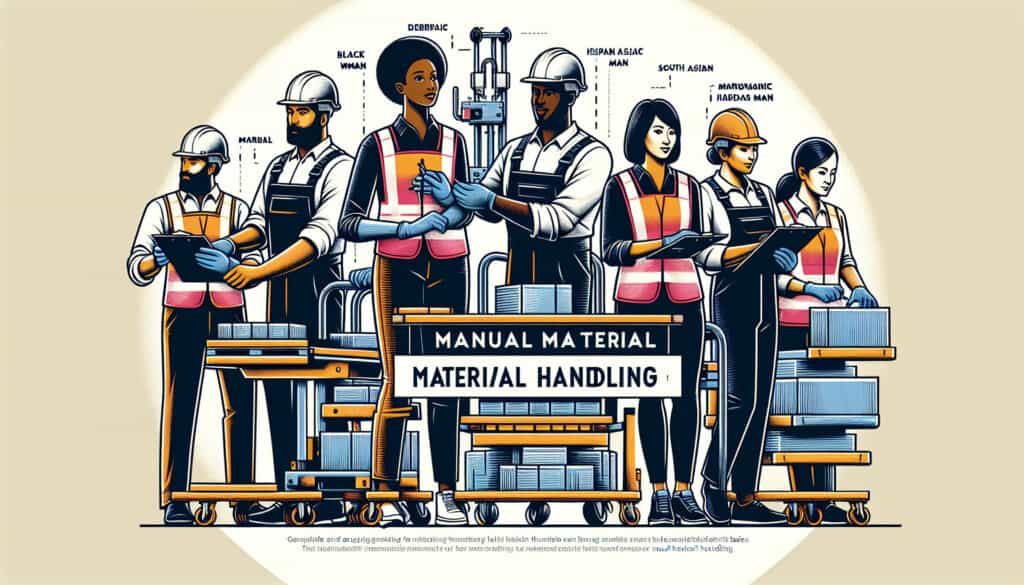Determinare i pesi e le forze massime accettabili per le attività di movimentazione manuale.
- Metodologie: Ingegneria, Qualità
Tavoli manuali per la movimentazione dei materiali Liberty Mutual (Tavoli Snook)

Tavoli manuali per la movimentazione dei materiali Liberty Mutual (Tavoli Snook)
- Miglioramento continuo, Ergonomia, Fattori umani, Ingegneria dei fattori umani (HFE), Produzione snella, Miglioramento dei processi, Gestione della qualità, Gestione del rischio, Sicurezza
Obiettivo:
Come si usa:
- A set of tables that provide guidance on the maximum acceptable weights and forces for lifting, lowering, pushing, pulling, and carrying tasks. They are based on psychophysical data and are widely used in ergonomics to design safe manual handling tasks.
Professionisti
- Provides a scientific basis for designing safe manual handling tasks; Widely accepted and used in industry.
Contro
- Can be complex to use and interpret; May not be applicable to all situations.
Categorie:
- Ergonomia, Gestione del rischio
Ideale per:
- Designing safe manual handling tasks to reduce the risk of musculoskeletal disorders.
The Liberty Mutual Manual Material Handling Tables, often referred to as Snook Tables, provide a standardized approach to assessing and mitigating risks associated with manual handling tasks. These tables derive their recommendations from psychophysical research, which examines human capabilities and limitations in the context of lifting, lowering, pushing, pulling, and carrying objects. Common applications include workplace ergonomics assessments across various industries such as manufacturing, warehousing, healthcare, and construction, where manual handling is prevalent. In project phases involving task design or risk assessment, ergonomists, health and safety professionals, and industrial engineers often utilize these tables to establish safe weight limits in manual handling tasks, thereby enhancing worker safety and productivity. The involvement of personnel from risorse umane and occupational health is also crucial, as they can help implement training and develop policies based on the insights rendered from the tables. The primary advantage of employing the Snook Tables lies in their scientifically validated metrics, which provide objective guidance for developing safer handling procedures. This broad acceptance in industry not only helps companies comply with safety regulations but also supports initiatives aimed at reducing musculoskeletal disorders among employees. The application of these tables often leads organizations to ingaggiare in continuous improvements and reassessments of their manual handling protocols, ensuring long-term safety and efficiency in operational practices.
Fasi chiave di questa metodologia
- Identify the manual handling task and its specific requirements.
- Reference the Snook Tables to determine maximum acceptable weights and forces.
- Assess the postures and movements involved in the task.
- Evaluate the frequency and duration of the manual handling activity.
- Consider environmental factors, such as surface conditions and space constraints.
- Implement design modifications based on the analysis from the tables.
- Test the modified task for compliance with ergonomic standards.
- Monitor employee feedback and adjust the design as necessary.
Suggerimenti per i professionisti
- Integrate task-specific risk assessments with Snook Tables to account for individual worker characteristics like height and strength.
- Regularly update and validate lifting and carrying recommendations by consulting with recent ergonomic research and field studies.
- Utilize feedback loops from employees during task observations to refine and adapt manual handling guidelines for various job roles.
Leggere e confrontare diverse metodologie, raccomandiamo il
> Ampio archivio di metodologie <
insieme ad altre 400 metodologie.
I vostri commenti su questa metodologia o ulteriori informazioni sono benvenuti su sezione commenti qui sotto ↓ , così come tutte le idee o i link relativi all'ingegneria.
Contesto storico
1986
(se la data non è nota o non è rilevante, ad esempio "meccanica dei fluidi", viene fornita una stima approssimativa della sua notevole comparsa)

Post correlati
Questionari sul disagio muscoloscheletrico
Test multivariati (MVT)
Analisi di regressione multipla
Sistemi di cattura del movimento
Metodo MoSCoW
Test mediano dell'umore